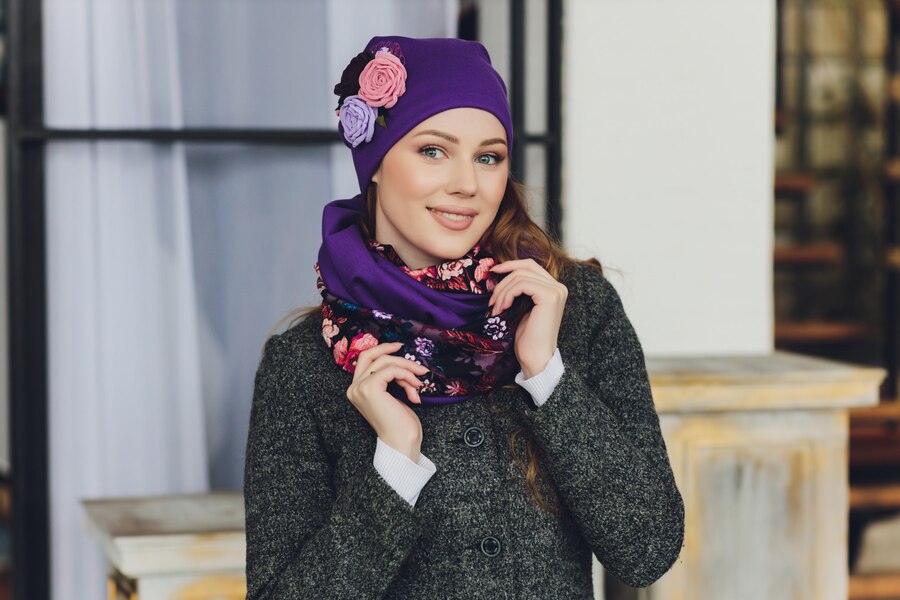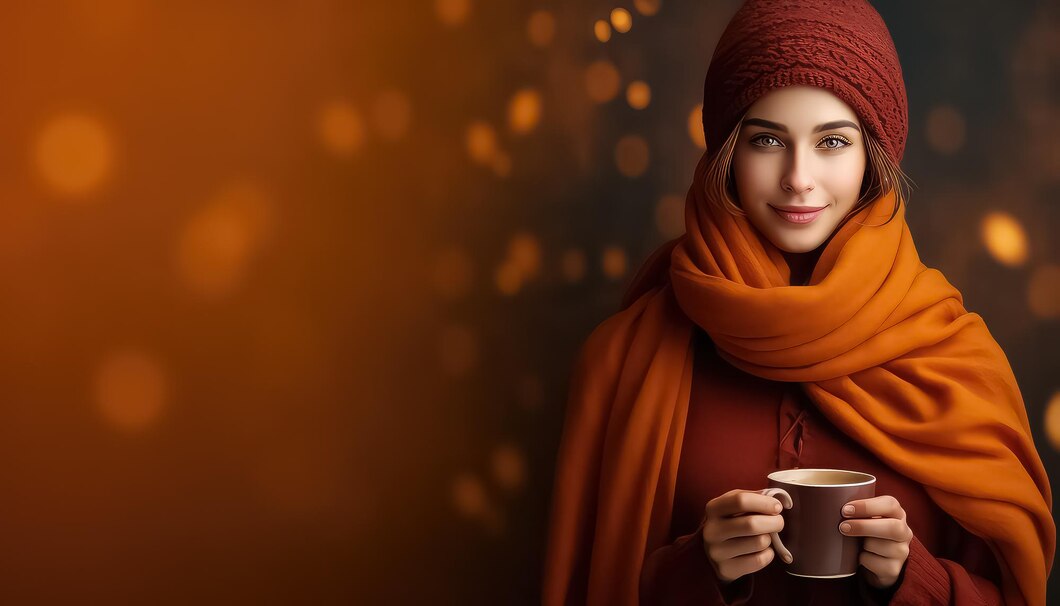Ever wrapped yourself in a shawl and felt instantly cozy? Shawls are versatile garments that provide warmth, style, and a touch of elegance. But what exactly is a shawl? And how has it woven itself into the fabric of various cultures around the world? Let’s dive into the fascinating world of shawls, exploring their types, cultural significance, fashion trends, and more.
Pashmina Shawls
When you think of luxury, a Pashmina shawl likely comes to mind. Originating from the Kashmir region, Pashmina is a fine type of cashmere wool, known for its softness and warmth. These shawls are lightweight yet incredibly warm, making them a favorite during colder months.
Cashmere Shawls
Cashmere shawls are another luxurious option, made from the wool of Cashmere goats. They’re prized for their softness, warmth, and elegant drape. Cashmere shawls can be quite an investment, but their timeless appeal makes them worth every penny.
Wool Shawls
Wool shawls are probably the most common type, offering a balance of warmth and affordability. They come in various styles and thicknesses, making them suitable for different seasons and occasions.
Silk Shawls
Silk shawls add a touch of sophistication to any outfit. They’re lightweight and have a beautiful sheen, perfect for formal occasions or as a light wrap during summer evenings.
Cotton Shawls
Cotton shawls are breathable and versatile, ideal for casual wear. They’re easy to care for and come in a wide range of colors and patterns, making them a staple in many wardrobes.
Shawls in Asia
In Asia, shawls have deep cultural roots. In India, shawls like the Pashmina and Jamavar are part of traditional attire. In Japan, the kimono often includes a shawl-like garment called a haori. Each region has its unique shawl style, reflecting its history and heritage.
Shawls in Europe
European shawls, particularly during the 19th century, were symbols of status and fashion. The Paisley shawl from Scotland, with its intricate patterns, became a favorite among European elites. Today, shawls continue to be a fashion staple in Europe.
Shawls in the Middle East
In the Middle East, shawls are often worn for modesty and protection from the elements. The keffiyeh, for example, is a traditional Arabian headscarf that also serves as a shawl. These garments are rich in history and cultural significance.
Shawls in the Americas
In the Americas, shawls have been embraced by various indigenous cultures. The Navajo, for instance, create beautiful woven shawls that are both functional and ceremonial. In South America, the rebozo is a traditional Mexican shawl used for everything from carrying babies to performing traditional dances.
Traditional Methods
Traditional shawl-making methods are intricate and labor-intensive. In Kashmir, for instance, Pashmina shawls are handwoven using techniques passed down through generations. Each shawl can take months to complete, reflecting the skill and dedication of the artisans.
Modern Techniques
Modern shawl production often involves machine weaving, which can produce shawls more quickly and affordably. While machine-made shawls might lack the unique touch of handwoven ones, they offer a practical option for everyday use.
Handwoven vs. Machine-made
Handwoven shawls are unique pieces of art, often with slight imperfections that add to their charm. Machine-made shawls, on the other hand, offer consistency and are generally more affordable. Both have their place in the world of shawls, depending on what you’re looking for.
Considering the Material
When choosing a shawl, the material is key. Do you want something warm like wool or cashmere, or something light and airy like silk or cotton? Consider the climate and your wardrobe needs.
Matching with Outfits
Shawls are incredibly versatile. You can drape a silk shawl over a little black dress for a night out, or wrap a wool shawl around your shoulders for a cozy day in. Think about the colors and patterns that will complement your existing wardrobe.
Seasonal Considerations
Different shawls are suitable for different seasons. A thick wool shawl is perfect for winter, while a light cotton or silk shawl works well in the summer. Having a variety of shawls ensures you’re covered year-round.
Classic Draping Styles
The classic drape over the shoulders is timeless and elegant. Simply place the shawl around your shoulders and let it hang. This style works well with both casual and formal outfits.
Modern and Trendy Styles
For a modern twist, try belting your shawl at the waist or wrapping it around your neck like a scarf. You can also experiment with asymmetrical draping for a more contemporary look.
Shawl as an Accessory
Shawls aren’t just for warmth—they’re a fantastic accessory. Use a colorful shawl to add a pop of color to a neutral outfit, or choose a shawl with intricate patterns to make a statement.
Washing Instructions
Different materials require different care. Wool and cashmere shawls often need to be dry cleaned, while cotton and some silk shawls can be hand-washed. Always check the care label before washing.
Storing Tips
Store your shawl in a cool, dry place. For delicate materials like Pashmina and cashmere, consider using a breathable fabric bag to protect them from dust and moths.
Repairing and Maintaining
If your shawl gets a snag or tear, don’t despair. Many minor issues can be fixed with a little care and attention. For significant damage, consider taking your shawl to a professional for repair.
Historical Fashion Trends
Shawls have been fashionable for centuries. In the 19th century, the Paisley shawl was all the rage in Europe. Shawls have always been a symbol of elegance and sophistication.
Contemporary Fashion Trends
Today, shawls are making a comeback in the fashion world. From runway shows to street style, shawls are being embraced for their versatility and timeless appeal. Influential designers are incorporating shawls into their collections, making them a must-have accessory.
Influential Designers
Designers like Alexander McQueen and Burberry have popularized shawls in their collections. These designers have reimagined the shawl, incorporating modern patterns and materials while respecting traditional techniques.
Famous Shawls in Movies
Shawls have made memorable appearances in films. Think of Scarlett O’Hara’s luxurious shawls in “Gone with the Wind” or the elegant wraps worn by Audrey Hepburn in “Breakfast at Tiffany’s.”
Shawls and Celebrities
Celebrities often use shawls to add a touch of glamour to their outfits. From royal figures like Kate Middleton to Hollywood stars like Sarah Jessica Parker, shawls are a go-to accessory for the rich and famous.
Shawls in Music and Art
Shawls have also been depicted in music and art. In many classical paintings, women are often shown wearing beautiful shawls, symbolizing grace and femininity. In music, shawls have been referenced in lyrics and album covers, adding to their cultural significance.
Global Market Overview
The global market for shawls is significant, with major producing countries including India, China, and Nepal. The demand for high-quality shawls continues to grow, driven by fashion trends and cultural appreciation.
Major Producing Countries
Countries like India and Nepal are renowned for their shawl production. In India, regions like Kashmir and Himachal Pradesh are famous for their exquisite Pashmina and wool shawls. These shawls are exported worldwide, contributing significantly to the local economies.
Fair Trade and Ethical Practices
As consumers become more conscious of ethical practices, there’s a growing demand for fair trade shawls. Fair trade ensures that artisans are paid fairly and work in safe conditions. Supporting fair trade shawls helps preserve traditional techniques and supports local communities.
Sustainable Materials
The production of shawls can have an environmental impact, depending on the materials used. Sustainable options like organic cotton and ethically sourced wool are becoming more popular. These materials are produced with minimal environmental impact, making them a better choice for eco-conscious consumers.
Eco-friendly Production Methods
Eco-friendly production methods, such as natural dyeing and handweaving, reduce the environmental footprint of shawl production. These methods not only benefit the environment but also ensure that traditional techniques are preserved.
Consumer Choices
As a consumer, you can make a difference by choosing shawls made from sustainable materials and produced ethically. Look for certifications like Fair Trade and Organic to ensure you’re making a responsible choice.
Knitting Your Own Shawl
Knitting your own shawl can be a rewarding project. There are countless patterns available online, catering to all skill levels. Knitting allows you to customize the size, color, and pattern of your shawl, making it a truly unique piece.
Crocheting Shawls
Crocheting is another popular method for making shawls. Like knitting, crocheting offers endless possibilities for customization. Plus, it’s a great way to relax and unwind while creating something beautiful.
Upcycling Old Clothes into Shawls
Got old clothes you don’t wear anymore? Why not upcycle them into a stylish shawl? This eco-friendly project not only gives new life to old garments but also allows you to create a one-of-a-kind accessory.
Why Collect Shawls?
Collecting shawls can be a fascinating hobby. Each shawl tells a story, reflecting the culture and craftsmanship of its origin. Whether you’re collecting vintage shawls or contemporary designs, there’s always something new to discover.
Famous Shawl Collections
Some collectors have amassed impressive shawl collections. Museums and private collectors alike value shawls for their beauty and historical significance. Visiting an exhibition of shawls can be an inspiring experience, showcasing the diversity and artistry of these garments.
Tips for Beginners
If you’re new to shawl collecting, start small. Look for shawls that catch your eye and fit within your budget. As you learn more about different types and styles, your collection will naturally grow. Don’t be afraid to ask questions and seek out knowledgeable sellers or fellow collectors for advice.
Technological Advancements
The future of shawls is exciting, with technological advancements playing a significant role. From innovative materials to new weaving techniques, the shawl industry is continually evolving. These advancements promise even more beautiful and functional shawls in the years to come.
Evolving Fashion Trends
As fashion trends evolve, so do shawls. Designers are constantly finding new ways to incorporate shawls into their collections, ensuring they remain relevant and stylish. Whether it’s through bold patterns, new materials, or unique draping styles, shawls are here to stay.
The Role of Shawls in Modern Wardrobes

Shawls have a timeless appeal that transcends fashion trends. Their versatility and practicality make them a staple in modern wardrobes. As we move forward, shawls will continue to be cherished for their ability to blend tradition with contemporary style.
Conclusion
Shawls are more than just pieces of fabric—they’re a testament to human creativity and craftsmanship. From their historical roots to their modern-day significance, shawls have woven their way into our hearts and wardrobes. Whether you’re wearing a luxurious Pashmina or a simple cotton wrap, a shawl is a timeless accessory that adds warmth, style, and elegance to any outfit.
FAQs
What is the difference between a Pashmina and a Cashmere shawl?
Pashmina is a type of cashmere, but it specifically refers to the fine wool from the undercoat of Himalayan goats. Cashmere can come from any region and any part of the goat’s coat.
How can I tell if a shawl is handmade?
Handmade shawls often have slight imperfections and unique patterns. You can also look for labels or certificates of authenticity that indicate the shawl is handwoven.
Can I wear a shawl in the summer?
Yes, lightweight shawls made from materials like cotton or silk are perfect for summer. They can add a stylish layer without causing you to overheat.
How do I store my shawls to prevent damage?
Store shawls in a cool, dry place, preferably in a breathable fabric bag. Avoid plastic bags, which can trap moisture and cause damage.
Are there any eco-friendly shawls available?
Yes, many brands now offer shawls made from sustainable materials like organic cotton and ethically sourced wool. Look for certifications to ensure you’re buying an eco-friendly product.
